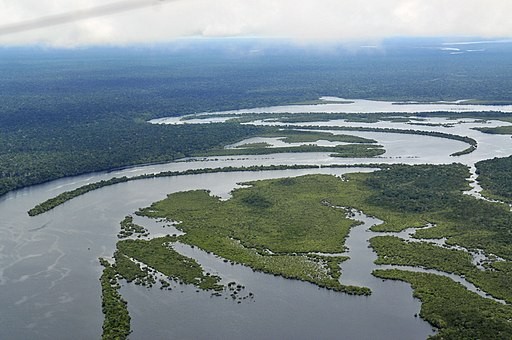For centuries, people have been talking about ancient cities hidden in the vast wilderness of the Amazon forest. It was also believed that Spanish explorers who searched for the mythical city of El Dorado got lost for good and never returned. Now, the pre-Hispanic settlements seem not imaginary, as experts have discovered a huge network of cities deep inside the rainforest.

Lost Valley of Cities
The discovery results from over two decades of investigation by archeologists from Germany, Puerto Rico, France, and Ecuador. The site is considered the earliest and largest urban network of built and dug features in the Amazon.
Twenty settlements were uncovered by the team, including five connected large cities. The vast site contains wide streets and long, straight roads, plazas, and monumental platforms that cover more than 385 square miles (1,000 square kilometers). It was found in the jungle at the Upano Valley, located on the eastern foothills of the Andes mountain range in Ecuador.
The scale of this urban development includes ceremonial buildings, earthen homes, and agricultural draining. According to archaeologist Stephen Rostain from France's National Centre for Scientific Research, such structures have never been seen before in the Amazon.
The traces of this lost civilization were first detected 25 years ago by Rostain, who spotted hundreds of mounds in the area. 2015, his team flew over the region and used light detection and ranging (LIDAR). This remote sensing method involves throwing laser light from above to detect structures below the thick tree canopies of the jungle.
It was believed that the first people who lived there 3,000 years ago had small, dispersed houses. However, the Kilamope and later Upano cultures built mounds and set their houses on earthen platforms organized around a low, square plaza.
Not much is known about the ancient people who lived in these sites. Based on the pits and hearths found in the platforms, experts assume that the Kilamope and Upano people who lived there probably mostly focused on agriculture. The presence of burnt seeds, jars, and stones for grinding plants suggests that the inhabitants ate maize and sweet potato and probably drank a sweet beer called chicha.
New Perspectives on Amazon Culture
Experts used to believe that the ancient Amazon forest was once a sparsely populated, inhospitable place for humans. The discovery of these ancient cities significantly challenges the longstanding perception of the region as a pristine wilderness.
The city was built around 2,500 years ago, and the people probably lived there for up to 1,000 years. Although it is difficult to accurately estimate the number of people who lived there at any one time, scientists conclude that it could be in the 10,000s or 100,000s.
Archeology professor José Iriarte from the University of Exeter explained that some of the findings are unique for South America, referring to the rectangular and octagonal platforms arranged together. The societies were also well-organized and interconnected, as indicated by the long sunken roads between the settlements.
The road network on the site is very sophisticated, connecting everything over a vast distance. There are also right angles, which are very impressive. Causeways with ditches on either side also suggest that the ancient inhabitants used canals to help manage the abundant water in the region.
RELATED ARTICLE: What's Causing Amazon Rainforest to Lose Resilience? Analysis Suggests Human-Caused Climate Change Among the Reasons
Check out more news and information on the Amazon Rainforest in Science Times.














